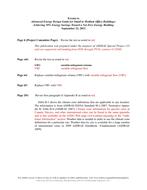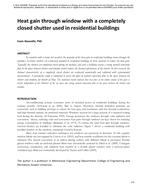Most of the extensive research in boiling and condensing heat transfer has been devoted to understanding these processes under normal conditions. In recent years, however, there has been increased emphasis on techniques which augment or enhance two-phase heat transfer. These techniques can be classified as passive methods, which require no direct application of external power, and active schemes, which require external power. Passive techniques include treated surfaces, rough surfaces, extended surfaces, displaced enhancement devices, swirl flow devices, surface tension devices, and liquid additives. The active techniques include mechanical aids, surface vibration, fluid vibration, electrostatic fields, injection, and suction. Two or more of these basic techniques may be utilized simultaneously (compound augmentation). A great deal of effort has been devoted to developing apparatus and performing experiments to define the conditions under which an augmentative technique will improve heat transfer for both bulk stagnant (pool) and flow conditions. The more effective and feasible techniques have graduated from the laboratory to full-scale industrial equipment.
This Survey paper describes the state-of-the-art in two-phase heat transfer augmentation. Laboratory studies which have clarified the basic phenomena are described. Particular note is made of those studies utilizing refrigerants. Application areas considered include refrigeration, air conditioning, power generation (nuclear and conventional), desalination, and cooling of electronic equipment, These applications involve encouraging high heat fluxes or low temperature differences for either fluid-to-fluid heat exchangers or systems with fixed heat transfer rates. Previous reviews of the general subject of convective heat transfer augmentation are given in Refs. 1-5. A short discussion of heat transfer augmentation in boiling and condensation is given in the book by Collier. The present report includes more recent material and is the first comprehensive survey of augmentation of two-phase heat transfer. Table 1 presents the classification of augmentation techniques which serves as an outline for this paper.
Citation: Symposium, ASHRAE Transactions, Volume 82, Part 1, Dallas, TX
Product Details
- Published:
- 1976
- Number of Pages:
- 15
- File Size:
- 1 file , 1.7 MB
- Product Code(s):
- D-DA-76-14-1


